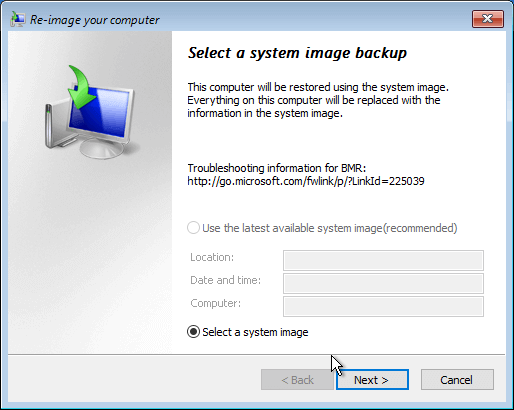
- #RESTORE FILES FROM BACKUP HOW TO#
- #RESTORE FILES FROM BACKUP WINDOWS 10#
- #RESTORE FILES FROM BACKUP SOFTWARE#
#RESTORE FILES FROM BACKUP WINDOWS 10#
Method 2: Restore files with Backup and Restore(Windows 7) in Windows 10 Method 1: Restore files from backup with File History
#RESTORE FILES FROM BACKUP HOW TO#
Then, you can continue to see below and learn how to restore files from backup with these backup and restore software.
#RESTORE FILES FROM BACKUP SOFTWARE#
To backup files with AOMEI Backupper Standard: Backup Files with Best Free File Backup Software To backup entire system with Backup and Restore(Windows 7) in Windows 10: Windows 10 Backup and Restore To backup files with File History: Backup Specific Folders That Change Often in Windows 10 If you don't have, please refer to the following articles and backup files now. Anyway, you need to create a backup image at first. Here are three ways in total, you could use Windows backup software - File History, Backup and Restore Windows 10, or third-party software AOMEI Backupper Standard. It may save all the files you cherish, whether it's working documents, family photos, videos, movies or other files.

Please stay for a while to learn the stepwise guide in the following. But if you lose any files, you still can restore files from backup to minimize the loss. Nasuni's corporate headquarters is based in Boston, Massachusetts, USA delivering services in over 70 countries around the globe.You will never want to use your backup unless something bad happens and damage or corrupt your files or system. Sectors served by Nasuni include manufacturing, construction, creative services, technology, pharmaceuticals, consumer goods, oil and gas, financial services and public sector agencies. Companies and organizations worldwide rely on Nasuni to easily access and share files globally from the office, home or on the road. Nasuni also eliminates the need for complex legacy backup and disaster recovery infrastructure, dramatically simplifying IT administration. Nasuni is a cloud replacement for traditional network attached storage (NAS) and file server silos, consolidating file data in easily expandable cloud object storage at a fraction of the cost. Nasuni provides modern cloud file storage, powered by the world's only cloud-native global file system. The Nasuni Ransomware First Aid Kits for Public Sector can be procured in AWS Marketplace, while also leveraging AWS Consulting Partners like CDW-G, SHI Government, Presidio and AHEAD. Government agencies that have chosen Nasuni have also seen a dramatic reduction of the storage footprint and savings of up to 50% on the total cost of storage compared to a traditional on-premises file system. And with this limited time offer bundle, Nasuni and AWS are even easier to fit into existing SLED budgets. "With Nasuni and AWS, a ransomware attack does not have to be a catastrophe that brings the organization to its knees, but an annoyance that is resolved in minutes once the breach and scope have been identified. "It's difficult to overstate the threat of ransomware to cities, schools and local governments," said David Grant, Chief Commercial Officer for Nasuni. Simple, centralized management of file storage across unlimited locations It's like a first aid kit that also cures the problem."īackup with fast recovery, and disaster recovery built in

"With Nasuni and AWS, the public sector can recover files within minutes, should they experience a ransomware attack. "Ransomware is an enormous, rapidly growing threat, and state and local governments, as well as education organizations are a frequent target," said Sandy Carter, Vice President of Worldwide Public Sector Partners and Programs for AWS. This is achieved with Nasuni Continuous File Versioning technology, which takes frequent snapshots of each and every file change and stores them in immutable AWS object storage, which makes restoring files as simple as dialing back to the point just before the attack happened. The Nasuni file storage solution on AWS enables customers to recover files extremely fast following a ransomware attack, with organizations able to restore millions of files in a matter of minutes. Many of these institutions are also not protected against an outage from a natural event or hardware failure. The public sector has all the same technical challenges of the private sector with the added burden of being a popular target for ransomware.


 0 kommentar(er)
0 kommentar(er)
